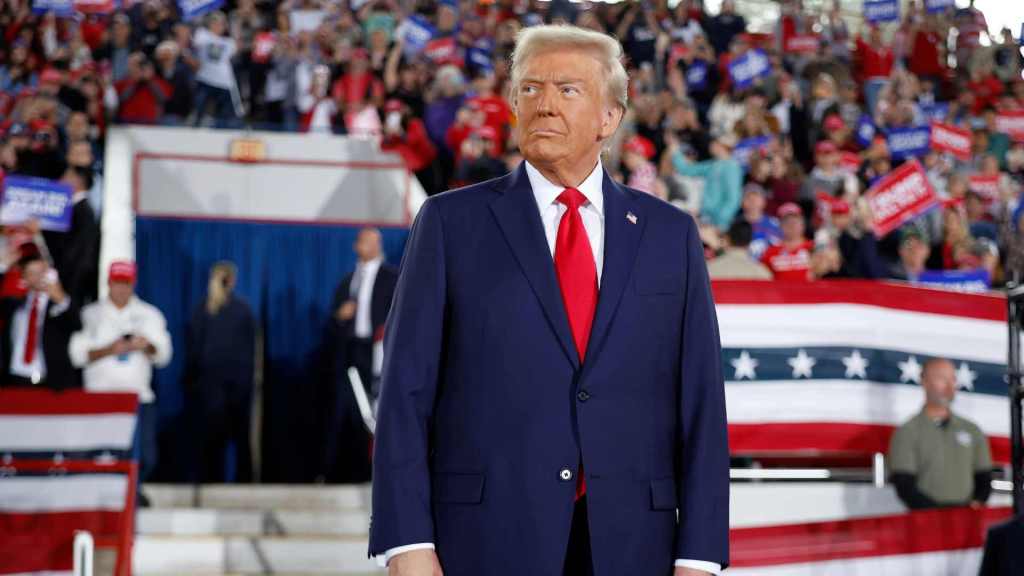What time will Trump be sworn in? Everything you need to know about Inauguration Day

Donald Trump takes the oath of office as his wife Melania Trump holds the bible and his son Barron Trump looks on, on the West Front of the U.S. Capitol on January 20, 2017 in Washington, DC (Getty)
Republican presidential nominee Donald Trump won the 2024 election in November after a closely-fought race against Kamala Harris. But what time will he actually be sworn in and become commander-in-chief of the US?
Former president Trump, who had already declared victory over Kamala Harris after being projected to win key swing states, had his victory confirmed on 6 November 2024 when he surpassed 270 electoral college votes after being projected to win the state of Wisconsin.
Addressing a large crowd at his victory speech in West Palm Beach, Florida, Trump said: “I want to thank the American people for the extraordinary honour of being elected your 47th president and your 45th resident… I will be fighting for you with every breath in my body. I will not rest until we have delivered the strong, safe, and prosperous America that our children deserve and that you deserve.”
Many LGBTQ+ Americans reacted to the news of Trump’s win with utter dismay, with some even apparently considering emigrating as a result. Searches for phrases such as “how to move to Uruguay” and “how LGBTQ+ friendly is Iceland?” spiked after 6 November, with queer people deeply concerned about the attacks on their rights that Trump has threatened to enact.
The last Trump presidency led to a roll-back of protections and anti-discrimination laws for LGBTQ+ people, and it doesn’t look as if a second term would be any different if he is re-elected, based on campaign promises and the detailed policy proposals outlined in Project 2025 – although Trump has tried to distance himself from the right-wing proposals.
What time does Trump’s inauguration start?

On January 20, 2025, Trump will take the oath of office at the US Capitol in Washington, D.C., marking the official start of his second term as president.
It’s set to be a grand affair, and the inauguration schedule will follow a traditional sequence of events: the swearing-in ceremony, the inaugural address, the departure of the outgoing president, and the lavish inaugural balls that have become a staple of American political tradition.
The inauguration ceremony will begin at 11:30 a.m. ET, which is 4.30pm in the UK. Trump will be sworn in and officially become President at noon (5pm, UK time). The swearing in was initially going to take place on the West Front of the U.S. Capitol, but Trump decided to move the ceremony indoors because of cold weather.
There will also be a ceremonial luncheon hosted by the Joint Congressional Committee on Inaugural Ceremonies (JCCIC), before a military parade, known as the Pass in Review, signals the formal, final handover of power.
How to watch Trump’s inauguration
In the UK, you’ll be able to watch live coverage on Sky and also on BBC One from 3.30pm.
You can also stream online via CNN, MSNBC, ABC, CBS News, Fox News, or via the White House’s livestream.
Why the delay between election and inauguration?
The US presidential election takes place on the first Tuesday following the first Monday in November, a date that stretches all the way back to 1845 when America was primarily an agrarian society.
Early November was chosen to allow farmers to vote after the harvest but before the harsh winter months set in. It also avoided Sundays and market days, ensuring maximum voter turnout.
This four-month waiting period, enshrined in the Constitution, also allows for vital transition planning. It gives the president-elect the time to assemble a cabinet, formulate policies, and prepare for the task of governing.
How did this story make you feel?

